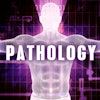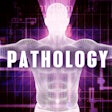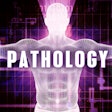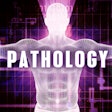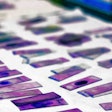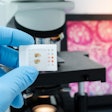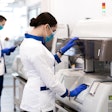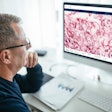
A new group hopes to boost the profile of pathology and lab medicine while tackling the economic challenges facing the specialty. The Panel of National Pathology Leaders (PNPL) hopes to put together pathology best practices while reaching out to related disciplines like radiology.
The nonprofit think tank, which was founded in 2019 but didn't begin operations until earlier this year, seeks to consider the "challenges and issues faced by people in the pathology and lab services industry, while at the same time trying to come up with practical solutions," said Allegra Klein, PNPL's director.
 Allegra Klein is the director of the Panel of National Pathology Leaders.
Allegra Klein is the director of the Panel of National Pathology Leaders."The rationale is that although there are organizations in the industry of pathology and laboratory medicine, there has not yet been one that would be on the level of a national think tank," she said. "I think that's the missing space that we're hoping to fill in the industry."
In terms of its setup, the PNPL has both members and expert panelists. Membership is open to hospital-based pathologists, academic practices, and laboratories based on size with annual dues ranging from $2,500 to $10,000. Members are connected with advisers, networking teams, and a reference library containing more than 100 documents on issues such as recruitment and billing. Members also receive access to courses, customized Medicare database reports, an annual workload relative value unit (wRVU) productivity report, and more.
Panelists are voted-in experts who pool their knowledge to share ideas for best practices and offer practical business solutions to PNPL members. Panelists, of which there are currently 11, include legal experts, lab consultants, and practice administrators such as Dr. Cory Roberts, president and CEO of ProPath; academics such as Dr. Raj Dash, professor and vice chair of pathology IT at Duke University; and practice consultants such as Robert Tessier, a senior reimbursement consultant at HBP Services.
"We're looking to have [members] become engaged," said Tessier, who is also a PNPL founding organizer. "It's extremely important that not only do we have [members'] commitment to pay our bills, but we also have [their] time, resources, and ideas so we can bring them together with other people who are similarly inclined to talk about these things."
In essence, the PNPL seeks to build a community for networking and collaboration modeled on the Radiology Business Management Association (RBMA), which performs a similar function in radiology, which makes up the other arm of diagnostic medicine.
"The RBMA is doing some really amazing things," Tessier said.
The PNPL is in discussions with RBMA to determine how pathology and radiology can share experiences in developing new solutions for pathology and lab medicine. A collaboration makes sense, given that pathology and radiology already collaborate when it comes to diagnosing patients -- pathology accounts for about 70% of diagnosis of disease, but when adding in radiology, the percentage goes up to 90% or more, according to Klein.
"I would say the problem or the challenge is that traditional doctors who are patient-facing don't know how to combine all that information into a diagnosis for the patient," she said. "So they may get one report from pathology and another report from radiology and the two, the right and the left hand, are not talking to each other so they don't combine forces."
One solution would be to form a diagnostic management team that would promote improved patient care. It's precisely the sort of topic the PNPL is in communication with various radiology stakeholders about.
"Whenever you talk about radiology, you can easily substitute the word 'pathology' and you're talking about exactly the same issues" such as compliance, cyber-security, third-party concerns, and dealing with federal programs, according to Tessier.
Other topics the PNPL is tackling are hospital contracting reports, compliance plans, and how to become a more efficient pathology operation.
"The challenge is to recognize that pathologists are far more than the sum of their wRVUs," Tessier said. "They need to be looked at in a much more holistic fashion, and that's one of our goals for 2022 -- to evaluate all the functionality pathologists provide, especially in the hospital setting or even in a laboratory setting and recognize that there's more than simply the number of widgets they produce."
Related to the topic of wRVUs is the issue of fee transparency. One of the most commonly used current procedural terminology (CPT) codes for pathology (88305, biopsies), can range from $33 to $935 for the exact same service, according to the PNPL.
Pathologists "don't recognize or realize sometimes that what they charge is not within a sort of normal range or an average kind of range," Klein said. "I think we can provide some very interesting data like that ... because patients are going to be shopping around. This fee transparency issue is becoming more and more relevant to the general public, and therefore pathologists need to know where they fall in that range and perhaps adjust accordingly."
Essentially, pathologists need to be a part of a community to learn these things, according to Tessier.
"There really hasn't been a mechanism for community engagement, collaboration, and networking and that's exactly what we want to try to encourage going forward," he said. "Letting people who have similar problems and issues get together and communicate with each other, and develop solutions and best practices."



